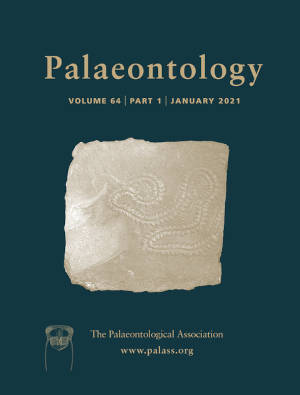Reg. Charity No. 1168330

Serial sectioning of a nodule encapsulating an adult specimen of the arthrodire placoderm Watsonosteus fletti from the Eday Flagstone Formation (Givetian) in the Orcadian Basin of northern Scotland has revealed the presence of a number of embryos within the adult. This specimen represents the oldest known record of fossilized vertebrate embryos. Thin sections of two of the slices have revealed the detailed histological structure of embryonic plates in placoderms, showing that as previously deduced from visual examination, the outer and inner layers were the first to form. Gut contents preserved near the embryos show that the species had a varied diet, with dermal bone fragments from sarcopterygians and placoderms.